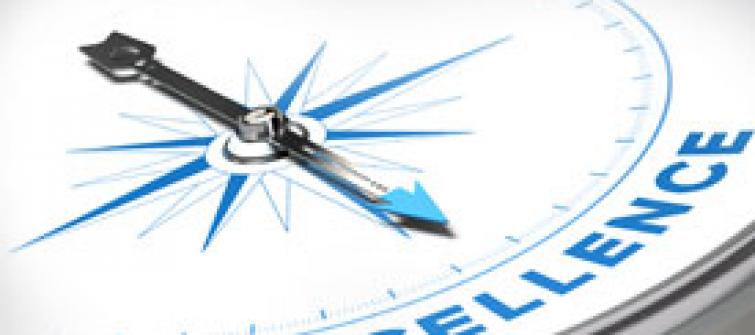How Do You Know if Your T&E Program is Successful?

 So you just finished implementing a new expense management system. How do you know if it’s successful?
So you just finished implementing a new expense management system. How do you know if it’s successful?
You may sense that everything is going smoothly. Users aren’t complaining too much. No one is screaming at you because they haven’t been reimbursed in three months. But how do you can you know, and prove, that your new expense system is benefiting your company?
With our upcoming release, Coupa 19, you will be able to track eight expense management KPIs, benchmark yourself against your peers, and take action to improve your expense management program.
Filling a Hole
Traditionally, travel agencies have done a pretty good job of providing their corporate customers with reporting and benchmarking on their travel program. For example, how do your company's average airfares, or hotel rates in your top destinations, compare to what other companies pay? What percentage of your travel bookings are made through an online booking tool, versus the more expensive method of calling a travel counselor? What percentage of your travel bookings are made through a preferred airline or hotel that you've negotiated a contract with?
However, the expenses side of “T&E” has generally failed to provide customers with these kinds of benchmarks and performance insights. This has left a big hole for companies that are trying to understand whether they are doing a good job managing their T&E program. That’s what we’re addressing, in eight areas and three simple steps: Measure it, benchmark it, prescribe improvements.
First, Measure It
One of my favorite business quotes is “If you can’t measure it, you can’t manage it.” In developing these new benchmarks, we spoke to dozens of customers, and found three common questions:
- Are we spending money wisely?
- Are we reimbursing employees promptly?
- Is our expense process efficient?
From there, we identified a number of KPIs that would help answer those questions, and we now enable our customers to track these automatically within Coupa.
Then, Benchmark It
Of course, just measuring your own company’s performance has limited value. If you are running a marathon, you need to know how fast your competitors are to judge whether you are fast, or slow. You need some benchmarks. The same with evaluating your expenses program.
Some time ago, Coupa launched Perfect Fit Insights, which allows customers to benchmark their procure to pay metrics against their peers so that they can drive improvements on procurement, invoicing and other areas of spend management. Now, we’re doing the same for expenses.
Take Action!
The final piece is knowing what to do with this information. So, we chose areas where we could not just expose a lot of data, but also make prescriptive recommendations for improving performance, based on what we see at leading companies. And, if you want to act on any of the recommendations, you can click right into the area where you can reconfigure your process to drive improvement. Or, you can send the recommendation to a colleague to execute. Talk about instant gratification!
Here are eight new ways for customers to measure their performance and see how they can improve their expense management programs:
1. Expenses Audit Rate. Coupa provides a much better way to audit expense reports than random, manual audits, instead allowing you to set up rules and flag only high risk reports. This metric shows you what percentage of your expense reports your accounting team is manually reviewing. The lower that percentage, the better. You can benchmark this against your peers and if you don’t like what you see, we have a series of recommendations for improvement.
2. Expense Compliance Rate. What percentage of your approved expenses comply with company policy? In theory, you would want that number to be 100 percent, So, in this case, the higher, the better.
3. Time to Approve Expenses. Are you reimbursing your employees quickly, or is it taking weeks and weeks to get their money back in their account? This has ramifications for employee satisfaction, as well as for cash forecasting.
4. Approval Chain Length. For an average expense report in your company, how many approvers have to sign off before it gets reimbursed? This is a key metric because lengthy approval chains have an impact on metric number three, time to approve expenses, and on the next two metrics.
5. Average Expense Age. Are people submitting expenses soon after they incur them or are they waiting months to do it? Long cycle times here have negative impacts on visibility and on closing your books. Ideally that time is measured in days or weeks. If it’s longer than a month, you need to work on your program.
6. Average Card Expense Age. A lot of our customers told us, "We'd really like to understand and control the speed of people submitting their corporate card expenses, so we can avoid late fees." If they're more than 30 days old, they're at risk of potentially being dinged with delinquency fees.
So, we added a metric that shows the percentage of a company's corporate card expenses that are more than 30 days old and compares it to their peers. We have a series of recommendations on how they can use automation to encourage both users and approvers to get those corporate card reports quickly submitted and approved for payment.
7. Percent of Spend on Corporate Cards. As long as you’re not racking up late fees, corporate card programs have many benefits for both employees and the company itself. Employees are not paying out of pocket, and the company can benefit financially from rebates from the corporate card provider. So, they have an incentive to maximize what we call corporate card adoption, the percentage of spend that is being charged to a corporate card. In this case, the higher, the better.
8. Average Cost Savings Per Expense Report. If you're moving from a more manual expensing process like spreadsheets, there are a number of industry reports that estimate how much you can save by automating your expense reporting process. Essentially, this metric tallies up to the number of expense reports you’re processing, and the savings from automating with Coupa. It’s a good metric to look at for the first year or so as you’re migrating over, and to be able to share with your stakeholders.
We think these eight metrics, together with peer benchmarking, offers a great way to measure the success of your expense management program, giving T&E professionals a more complete set of metrics, and giving Coupa customers the same Perfect Fit Insights they enjoy in other modules. More importantly, with the accompanying recommendations, you can now take immediate action to boost your program’s success.